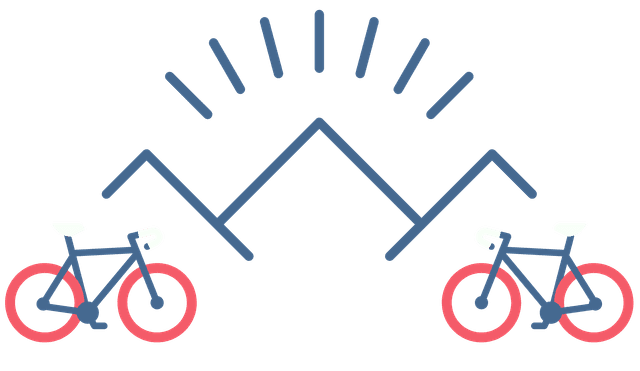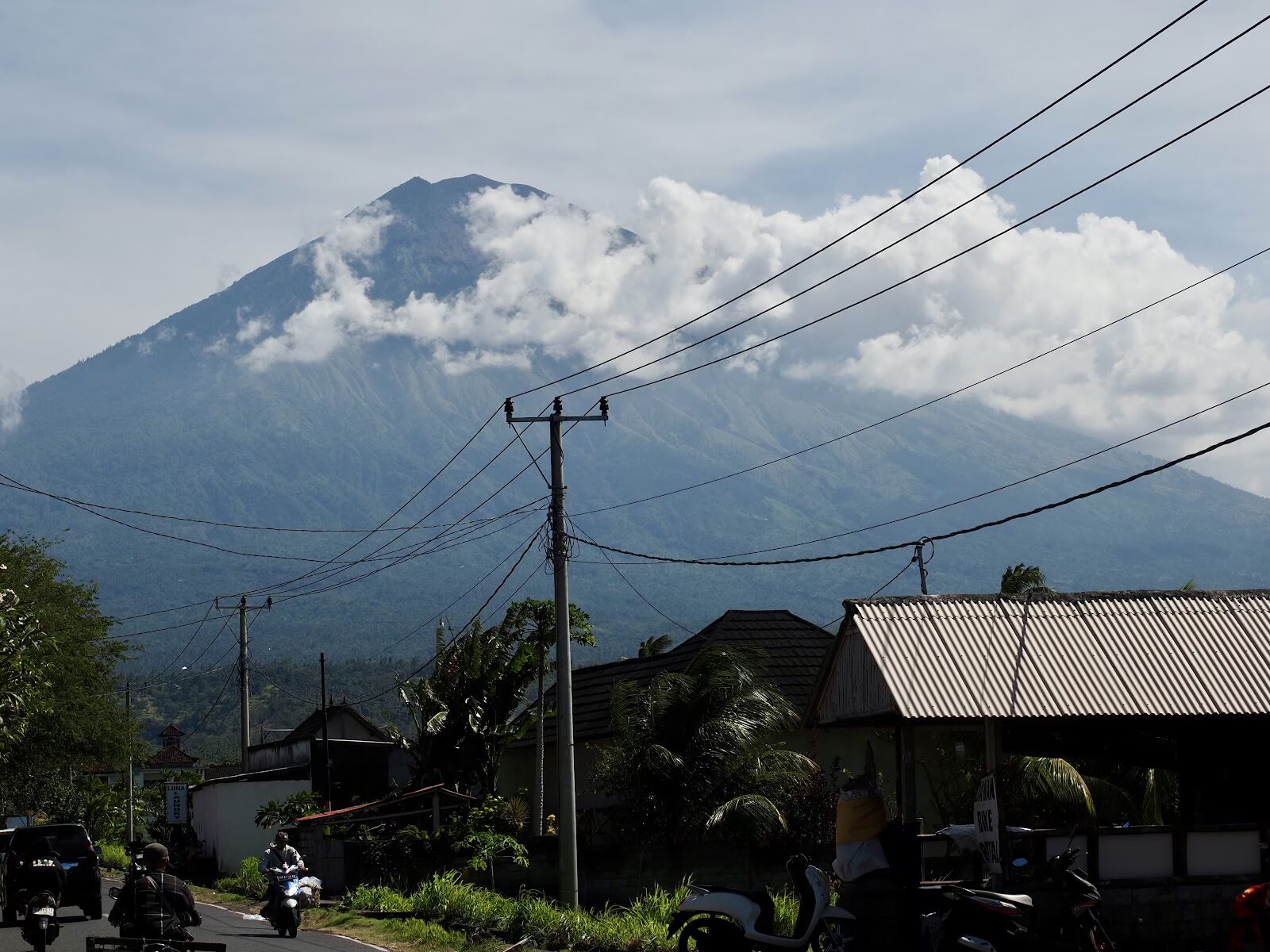Tasmania: A House of Straw
Wed May 07 2025
|Conor and AlinaAt the very early stages of our planning—before we even left Spain—we had booked an exit flight from New Zealand (as per our visa conditions) to Melbourne, in order to visit our good friend Podge and exploit his unwavering hospitality. We quickly pushed any further planning to the back of our minds and confidently said to ourselves, “We’ll sort that out later.”
Australia is roughly the size of Europe and slightly smaller than the USA. It’s littered with animals and insects that we don’t understand—many of which could easily kill us if we got careless or complacent. For a while, we were scratching our heads, wondering how we were going to navigate Oz on our bikes. The major cities are far apart, and the train network isn’t much to write home about.
It’s a well-worn trope that everything in Australia is rather hostile—be it spiders, wildfires, sharks, floods, bogans, crocodiles, snakes, or an orderly but aggressive kangaroo. Even worse, the seemingly harmless koalas could pass on chlamydia if you get too close.
Truthfully, we were looking past Australia and merely viewing it as a barren, unmanageable stepping stone to Indonesia. Then one day, while squinting at a map of Oz, we spotted the bite-sized island of Tasmania (or “Tassie” to the locals), and the proverbial lightbulb went off in our heads. Done deal: we’d fly to Melbourne, leverage our friend for free accommodation, and catch the ferry to Tassie—where we could cycle freely and carelessly for the next two months or so. Easy as.
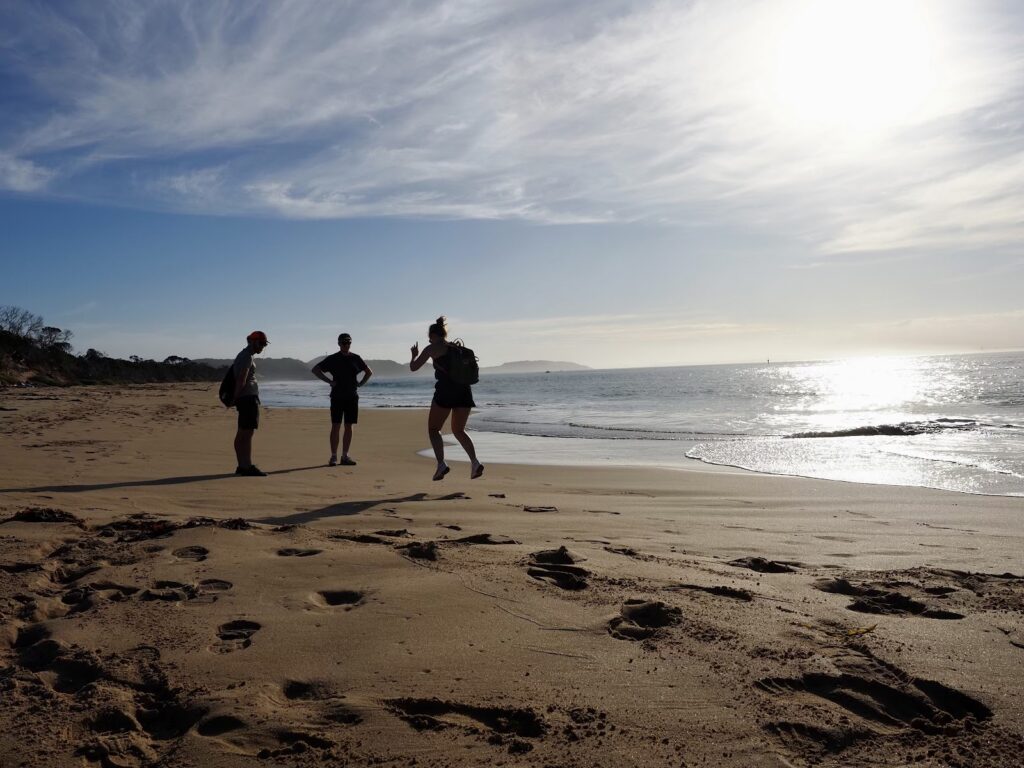
Having left New Zealand behind, it was time to start the next leg of our trip. Our plan—like most of our plans—was simple, loose, and only half-baked.
After enjoying long Southern Hemisphere summer days for the past three months, it was becoming clear that the nights were starting to close in on us, and the cold wouldn’t be far behind. By this stage, it had also been pointed out to us several times that “Tasmania will be getting quite chilly at this time of year”—an ominous sign that cycling and camping might be a slightly mad undertaking.
With that in mind, we decided to spend most of the next three months off the bikes. We lined up a few volunteering opportunities (via Workaway) that would provide us with free food and accommodation in exchange for our labour and our irresistibly charming personalities.
Workaway is an online platform offering a host of volunteering gigs—from childminding and English teaching to fruit picking and dog walking. After tweaking a few filters to match our interests, we quickly settled on three hosts for our time in Tasmania. This would allow us to drastically reduce our outgoing expenses and, if we played our cards right, even develop new skills and knowledge in our areas of interest.

After a fantastic ten or so days in Melbourne, we boarded the train to Geelong and hopped on the ten-hour overnight ferry to Tassie.
Drawing comparisons between New Zealand and Tassie was inevitable. They share a lot—but the wildlife in Tassie is a whole different story. Having honed our skills as amateur birdwatchers in New Zealand, we were used to scanning treetops, hoping to catch a glimpse of whatever bird we’d just heard singing in the distance. In Tassie, spotting wildlife is a non-issue. In fact, it’s harder to avoid the countless creatures hopping, flying, swimming, running, crawling, or sneaking all over the place.
We had been pre-warned that the amount of roadkill in Tassie was off the charts—and it quickly became clear why. Even though it’s Australia’s smallest state, it’s one of the most densely populated when it comes to wildlife. There are so many animals rustling around on the roadside that hitting one or two in your ute is a near-weekly occurrence for many locals.
According to some estimates, about 500,000 animals die on Tasmanian roads each year, making it the so-called “roadkill capital of the world.” On bikes, the smell of pulverized possums can be overpowering—but we managed as best we could. Just try not to rest directly next to a carcass and you’ll be fine.
When our ferry docked in Devonport, we cycled for two days on the Tasmanian Trail southbound to Deloraine, where we were due to meet our first Workaway hosts.
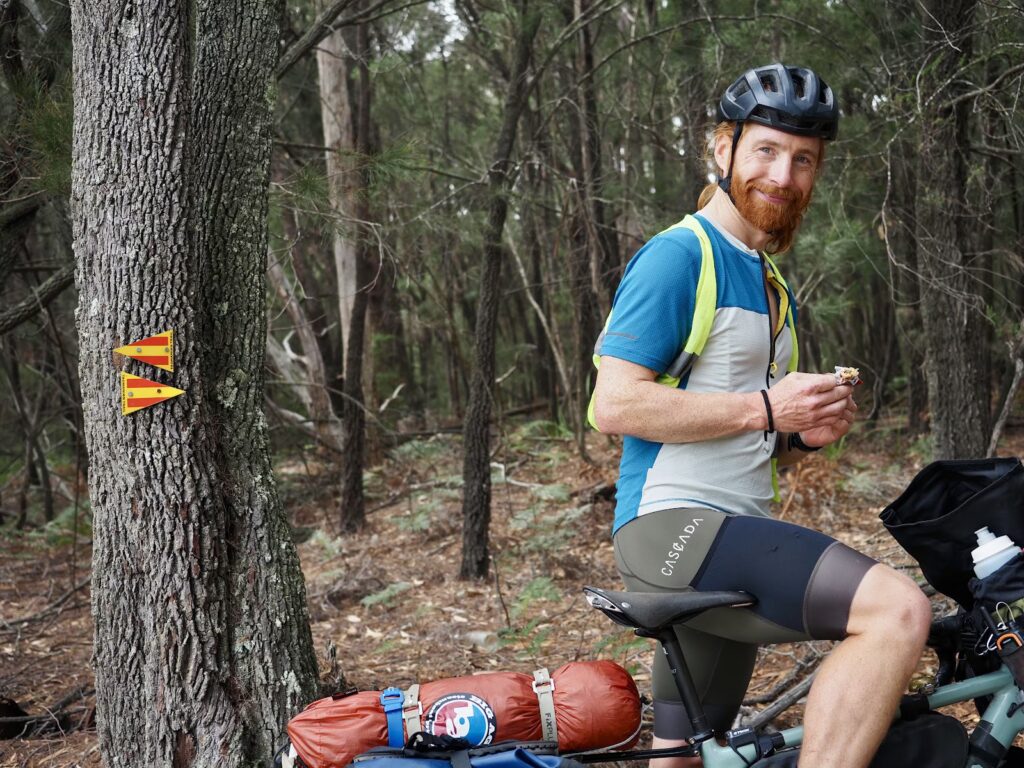
Our hosts Patrick and Rhianna are building a solar-passive, straw bale house and needed a few extra hands to help weatherproof it before the Tassie winter truly set in. When we arrived on site, the foundations were already laid. The wooden frame of the house was in place, straw bales were packed into the walls, and the roof was mounted and rainproof. However, there were still exposed gables and plenty of weatherproofing and airtighting measures that needed seeing to.
We quickly learned a lot. The design concept was fairly straightforward: build an energy-efficient, airtight house that would rely on the sun for its winter heating needs, and use a pergola to block the intense Australian sun from entering the triple-glazed windows in summer. In theory, this would keep the house warm in winter and cool in summer—simply by managing solar gain.
The heat retention from thermal mass of the concrete floor and the airtightness and insulation of the structure were integral to the success of the design. Patrick and Rhianna have so much faith in the concept that they don’t plan to install any additional heating or cooling systems—no fireplace, no air conditioning, no radiators.

Their electricity would come from solar panels, and all water would be collected via a rain catchment system. The entire setup was built around responding to the local climate, harnessing the resources that fall from the sky, and limiting reliance on increasingly volatile global supply chains.
This philosophy extended beyond the house. It meant growing as much of your own food as possible, developing the skills to fix most of your tools and appliances, and prioritising purchases that could be repaired using basic and widely available parts.
The decision to build the walls with straw bales instead of bricks was especially interesting. Highly regarded by natural builders worldwide, straw bale construction has a low environmental impact, is readily available, easy to work with, and offers exceptional insulation & soundproofing—for a fraction of the cost of conventional building materials. From what we could see, it was a no-brainer—and vastly superior to the poorly insulated apartments of Barcelona that we had begrudgingly become accustomed to.

During our stay, we took on all sorts of tasks: installing battens and insulation paper in the gables, packing out holes in the straw with cob, mounting flashings for additional waterproofing, painting the flashings to avoid corrosion, and applying a full coat of exterior render (by far the biggest and most rewarding job of them all).
But we didn’t just work. We were lucky to have fantastic hosts who we genuinely enjoyed spending time with. We had a pizza night, visited the local pub a few times, went platypus spotting (and yes – we got to see some platypus), and shared many great conversations.
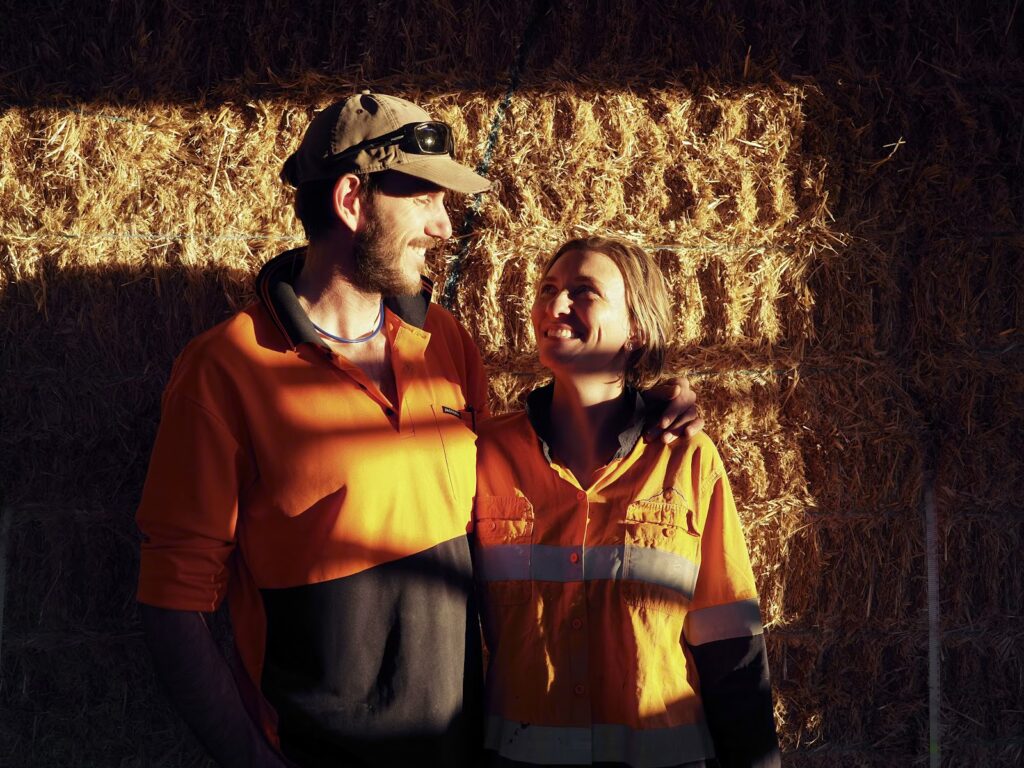
At the time of writing, we’re nearing the end of our stay in Deloraine at Patrick and Rhianna’s house—after extending our visit by a full week. We’ll leave with a bunch of new (and improved) skills, heaps of inspiration, and a much wider vocabulary and understanding when it comes to insulation, architecture, and natural building.
It was a very pure and enjoyable exchange. We offered our unskilled labour and helped wherever we could. In return, they gave us free accommodation, good food, and—most importantly—free ideas that we’ll carry forward with us.
